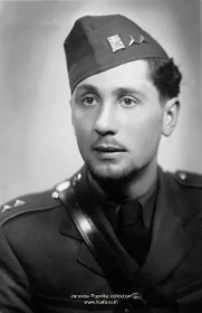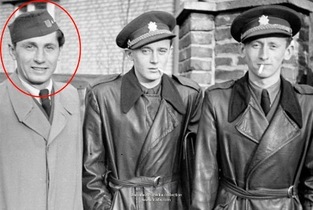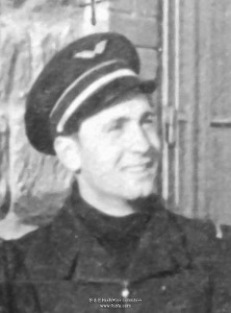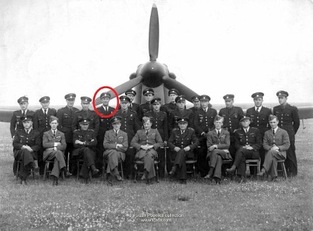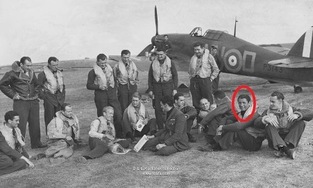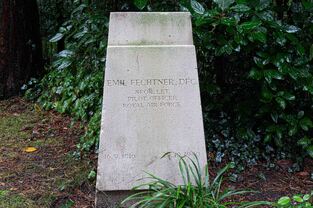- Home
- About The Project
- About The Author
- Latest additions to the project
- Operation BULBASKET
- Oradour-Sur-Glane Massacre 10 June 1944
- British Normandy Memorial
- John Northend - The Inspiration
- Lancaster W4192 "QR-E" 61 Squadron RAF
- The Cemeteries; UK, Ireland and European mini-tour
- Aarestrup Kirke, Denmark
- Aarestrup Kirke - Loss of Liberator KH410
- Aarhus Vestre Cemetery, Denmark
- Arnhem Oosterbeek Cemetery, Holland
- Basingstoke, Wortley Road Cemetery
- Bayeux War Cemetery, France
- Church Of Ireland Churchyard, Belturbet, Republic of Ireland
- Bergen-Op-Zoom, Netherlands
- Bretteville-sur-Laize Canadian War Cemetery
- Brookwood Military Cemeteries
- Cambridge American Cemetery
- Cranwell, St Andrews Parish Church
- D-Day Gold Beach - Remnants of Mulberry Harbour
- Deutsche Soldatenfriedhof, Cannock Chase
- Deutsche Soldatendfriedhof La Cambe, Normandy
- Dunkirk Town Cemetery, France
- Enniskillen Roman Catholic Cemetery
- Escoublac-La Baule War Cemetery St Nazaire
- HAMEL MILITARY CEMETERY, Somme Department, Northern France
- Harefield St Mary's ANZAC Cemetery
- Royal Victoria Hospital Netley and Military Cemetery, Southampton
- Nijmegen Jonkerbos War Cemetery
- Northwood Cemetery
- Odense Assistens Cemetery, Denmark
- Poperinghe New Military Cemetery, Belgium
- Ranville Churchyard, France
- Ration Farm Cemetery, Chapelle D'Armentieres, France
- Reichswald British War Cemetery, Germany
- Runnymede Commonwealth Air Forces Memorial
- Scopwick Burial Ground, Scopwick, Lincolnshire
- Sleaford Cemetery
- Sainte Marè Église
- CWGC Eyes On, Hands On Volunteer Programme
- Biography Flight Sergeant Eleanor Maud Barker WAAF
- Biography Commandant Roger Baudoin French Foreign Legion
- Biography Trooper George Sydney Herbert Biffin B Sqn 1 SAS
- Biography Lance Sergeant Charles Frederick Bristow GM RE
- Biography Lt HD Brotheridge Ox & Bucks Light Infantry
- Biography Lieutenant W H England No 48 RM Commando
- Buffalo LVT 'Conqueror' destroyed at Walcheren.
- Biography Pilot Officer Emil Fechtner RAF (Czech)
- Biography Private Oswald Fisher 2nd RM Bn, RN Division, RMLI 1916
- Biography Lt Col J G Fitzmaurice MC Royal Tank Regiment
- Biography Flight Sergeant Josef František DFM* RAF
- Biography Sergeant Pietro Alfredo Giovetti RAFVR
- Biography Lieutenant John Grayburn VC, 2 Para
- Biography Lt Cdr Nicodeme Guilonard Netherlands Navy
- Biography Major The Viscount Arthur Onslow Edward Guinness, Viscount Elveden.
- Biography Captain PH Haydon DSO No. 41 RM Commando
- Biography Private Owen Hooper, The Buffs & 4 Commando
- Biography Lieutenant Joseph Patrick Kennedy Jr. US Navy
- Biography Flight Lieutenant DSA Lord VC RAF
- Biography Major Robert Reid Maitland MB CHB RAMC
- Biography Wg Cdr Jaroslav Maly RAF
- Biography Lieutenant Colonel William McDowell DSO BSc RE
- Biography Flying Officer Geoff Adrian Mombrun RAFVR
- Biography Marine Byron Moses No. 41 RM Commando
- Biography Flying Officer J E Northend RAFVR
- Biography Group Captain 'Bobby' Oxspring DFC** AFC RAF
- Biography FO Ludwik Witold Paszkiewicz DFC RAF
- Biography Lieutenant HE 'Jimmy' Pearson MC The Reconnaissance Corps
- Biography Rifleman Frank Pennefather, 3rd NZ Rifle Brigade
- Biography Sergeant Robert John "Jack" Preece, 61 Squadron RAF.
- Biography Lieutenant John Richard Priestley The Rifle Brigade
- Biography Staff Sjt Christopher Robinson Glider Pilot Regt., AAC
- Biography Private AMB Roozeboom No 10 (I-A) Cdo
- Biography Sepoy Mahrup (Mahruf) Shah 129th Duke of Connaught's Own Baluchis
- Biography Flying Officer Burrell AT Soundy RNZAF
- Biography Private James Stokes VC 2nd Bn KSLI
- Biography Lieutenant Colonel Leon Robert ‘Bob’ Vance, US Army Air Force
- Taking Chance. The importance of remembrance.
- Useful Links- Museums and Websites
- MA FINAL PROJECT
81887 Pilot Officer Emil Fechtner DFC RAF Volunteer Reserve
|
Rank |
Pilot Officer |
|
Name & Decorations |
Emil Fechtner |
|
Service |
Royal Air Force Volunteer Reserve |
|
Unit |
310 Sqn RAF |
|
Attached To |
(Green Section Leader) |
|
Honours |
Distinguished Flying Cross - investiture 27th October 1940
|
|
Date of Death |
29th October 1940 |
|
Place of Death |
Whitlesford, near Duxford, Cambs. |
|
Circumstances |
Killed in Action (Mid air collision whilst formating for a patrol) |
|
Age |
24 |
|
Buried or Commemorated at |
Brookwood Cemetery (Czech Section) |
|
Grave or Memorial Number |
Section 28: Row E: Grave 1 |
Emil Fechtner – One of the Few | Free Czechoslovak Air Force Associates ltd (fcafa.com)
https://fcafa.com/2019/10/26/emil-fechtner-one-of-the-few/
Pre WW2
Emil Fechtner was born on 16 September 1916, in the Žižkov District of Prague, Czechoslovakia. The family later moved to Hradec Králové because of his father’s employment. There Emil attended grammar school, and successfully passed his school-leaving exam in June 1933, before finding work as a clerk.
On 1 October 1935, for his compulsory military service, he was assigned to the 10th Regiment of the Czechoslovak Army, an artillery unit, from where he graduated, at the rank of podporučík (Lieutenant) which was the highest rank that could be achieved by a non-professional soldier. He was an ambitious young man and decided to become a professional soldier and in 1936 joined the Military Academy at Hranice in the Moravian region of Czechoslovakia. From there he graduated in 1937 and was posted to the 3rd Air Regiment ‘Gen. Milan Rastislav Štefánik’ which was deployed at Piešťany airbase in the Slovakia region of Czechoslovakia. There he joined the 38th Fighter Squadron which was equipped with Avia B-534 biplane fighter aircraft. In October 1937, he attended a pilot’s training course at the Military Aviation Academy at Prostějov, graduating in October 1938 as an operational pilot, and returned to the 38th Fighter Squadron in time for the general mobilisation in response to hostile demands from Nazi Germany.
Following the Munich Agreement of 30 September 1938, the Sudeten regions of Czechoslovakia were ceded to Germany, whilst other regions of Czechoslovakia were claimed by its neighbours; Poland occupied the Český Těšín region in the east, whilst Hungary occupied the southern regions of Slovakia and the Carpathian Ruthenia. During that tense period, the squadrons of the 3rd Air Regiment Air Force in Slovakia were mobilised in readiness to face the Hungarian Air Force if required.
With the German occupation of Czechoslovakia on 15 March 1939, Slovakia became ‘independent’ from Czechoslovakia, but in reality, just a puppet State for Nazi Germany. Emil and other Czechoslovak airmen serving in the Czechoslovak Air Force in Slovakia were returned to the German Protectorate. By this time he was already an experienced flyer and had achieved 229 flying hours to his credit.
Poland :
Do Polska :
The Czechoslovak Air Force was quickly disbanded by the Germans and all personnel dismissed; the same fate befell most of those serving in the Czechoslovak Army. Germanisation of Bohemia and Moravia began immediately. For the military personnel and many patriotic Czechoslovak citizens, this was a degrading period. Many sought to redress this shame and humiliation and wanted to fight for the liberation of their homeland. But by 19 March 1939, former senior officers of the now-disbanded Czechoslovak military had started to form an underground army, known as Obrana Národa [Defense of the Nation]. One of their objectives was to assist as many airmen and soldiers as possible to get to neighbouring Poland where Ludvík Svoboda, a former distinguished Czechoslovak Legionnaire from WW1, was planning the formation of Czechoslovak military units to fight for the liberation of their homeland. Within Czechoslovakia, former military personnel and civilian patriots covertly started to arrange for former Air Force and Army personnel to be smuggled over the border into Poland to join these newly formed Czechoslovak units.
However Czechoslovak officials in Poland had been in negotiations with France, a country with which Czechoslovakia had an Alliance Treaty. Under French law, foreign military units could not be formed on its soil during peacetime. The Czechoslovak escapees, however, could be accepted into the French Foreign Legion with the agreement that should war be declared they would be transferred to French military units. The Czechoslovaks would, however, have to enlist with the French Foreign Legion for a five-year term. The alternative was to be returned to occupied Czechoslovakia and face German retribution for escaping – usually imprisonment or execution with further retribution to their families.
The Czechoslovak escapees were initially billeted at Bronowice Małe, a former Polish army camp outside Krakow, whilst arrangements were made for them to travel to France. After a short stay in Poland, Emil, along with 200 other escapees, mainly Czechoslovak airmen, travelled by train to the Polish Baltic port of Gdynia, where on 26 July they boarded the ‘SS Kastelholm’, a Swedish coastal steamer and set off for France. Part of the voyage down the Baltic Sea was very rough, even to airmen who were used to flying in turbulent conditions, and so the ‘SS Kastelholm’ stop at the Danish port of Frederikshaven to re-supply was a welcome relief for the Czechoslovaks onboard. After a five-day voyage, they arrived in Calais on 31 July.
France:
Francii :
Initially, Emil and his fellow escapees were transferred to the Foreign Legion’s recruitment depot at Paris, to undergo medical checks, and the necessary documentation was made for their enlistment into the Legion pending their transfer to the Legion’s training base at Sidi Bel Abbès, Algeria. During this time they attended French classes and any free time was usually spent in Paris exploring the sights and practising their newly learnt French with the girls they met.
These arrangements were still not completed by 3 September 1939 when war was declared and so Emil was released from Legion service on 3 October to join l’Armee d’Air.Two days later he was posted, at the rank of Sgt to their training base at Centre d’Instruction de Chasse at Châtres airbase, near Paris, for re-training as a pilot on French MS 230 fighter aircraft. Amongst his colleagues, there were Vilém Göth, Vaclav Bergman, Emil Foit, František Burda, František Hradil, Vladimír Zaoral and Karel Vykoukal, all of whom were destined to become Battle of Britain pilots with him in England. During this period of their training, Emil and his fellow Czechoslovak airmen also attended École Spéciale Militaire de Saint-Cyr, the French Officers Military Academy at Saint-Cyr, about 400 km west of Paris.
Figure 3 Emil Fechntner, Saint Cyr, France, 1940.
On 1 May 1940, he was promoted to rank of Lieutenant. On 23 May, having completed 13 hours of flying, was posted, with other Czechoslovak pilots at Chatres, to Cazaux, about 800 km away in south-west France but was not assigned to an operational unit. France capitulated before he could participate in the Battle of France. With the surrender of France on 22 June, Czechoslovak airmen were released from l’Armee d’Air service and those at Cazaux were instructed to get to Bordeaux,about 70 km away, for evacuation by ship to Britain before the advancing German army reached the port. At Bordeaux, the Czechoslovak airmen, under the command of Staff Capitan Josef Schejbal, as well as Poles and other nationalities boarded the ship ‘Karanan’, a small 395 tonne Dutch cargo ship, for the voyage to Britain. They sailed on 19 June and arrived two days later at Falmouth.
RAF :
After arriving at Falmouth, the Czechoslovak airmen were transferred to RAF Innsworth, Innsworth, Gloucestershire for security vetting. Emil was accepted into the RAF Volunteer Reserve, at the rank of P/O and, at the beginning of July, transferred to the Czechoslovak airmen’s Depot at Cosford, near Wolverhampton. On 12 July, with other Czechoslovak pilots, he was posted to the newly formed 310 (Czechoslovak) Sqn which was based at Duxford, near Cambridge. They were equipped with Hurricane Mk I aircraft and commanded jointly by S/Ldr Alexander Hess, the first Czechoslovak to command an RAF squadron. and S/Ldr George D.M Blackwood.
After rapid conversion to Hurricanes for the Czechoslovak pilots, and some basic English lessons, taught by Louis de Glehn, the squadron was declared operational on 17 August and made its first operational patrol at 14:10 that day. Emil had completed his Hurricane conversion and was passed for duties as an operational pilot. That afternoon, he and fellow Czechoslovak pilots P/O Rypl, Sgt Hubáček, Sgt Řechka, led by F/Lt Jefferies made the squadron’s first operational patrol – a short 30-minute uneventful flight. It was the first operational flight in the Battle of Britain for these Czechoslovak pilots and Emil was flying Hurricane Mk NN-N, I P3148.
During the Battle of Britain, Emil made 51 operational flights and achieved combat success with 4 destroyed, 1 probable and 1 damaged Luftwaffe aircraft:
|
Date |
Time |
Hurricane |
Action |
|
|
|
|
|
|
26/08/40 |
15:30 |
P3143 |
Me 109e, destroyed near Harwich. |
|
31/08/40 |
13:30 |
NN-S, P3889 |
Do 17, destroyed North-East of London. |
|
03/09/40 |
10:40 |
NN-M, P3143 |
Me 110, destroyed over Thames Estuary. |
|
07/09/40 |
10:40 |
P3056 |
Me 110 damaged South-East of North Weald airfield. |
|
18/09/40 |
17:15 |
NN-T, P8809 |
Do 17, destroyed over Thames Estuary. |
|
27/09/40 |
12:40 |
NN-S, L2713 |
Do 17, probable over South-East London. |
For these achievements, he became the 2nd Czechoslovak airmen to be awarded the DFC, with the award ceremony being held on 27 October 1940.
Two days after being awarded the DFC, he was killed in a flying accident. Shortly after taking-off from Duxford in Hurricane Mk I P3889, NN-S to patrol the Maidstone area, as Green section flight leader. About 1.5 km from the airfield his aircraft was in an aerial collision, at 13:55, at an altitude of 600 mtrs with the Hurricane Mk I P3707, NN-A of F/Lt Jaroslav Malý also of 310 Sqn and crashed at Whitlesford, near Duxford. His remains were found in the crashed aircraft and initially buried at the nearby cemetery at Royston. He was 24 years old and the eighth and last Czechoslovak pilot to be killed in the Battle of Britain.
Jaroslav Malý survived the collision but was slightly injured when he force-landed his aircraft at Fowlmere near Duxford. He was later promoted Wing Commander and posted to the Inspectorate of the Czechoslovak Air Force in London. He was found deceased in the Cumberland Hotel on 5th June 1941, it is believed that he took his own life, perhaps unsettled by his part in the death of PO Fechtner.
P/O Emil Fechner was later re-interred in grave 28.E.1 in the Czechoslovak section of the Brookwood Military cemetery.
For Wg Cdr Jaroslav Maly's details please see page https://tellthemofus.uk/biography-wg-cdr-jaroslav-maly--po-emil-fechtner

